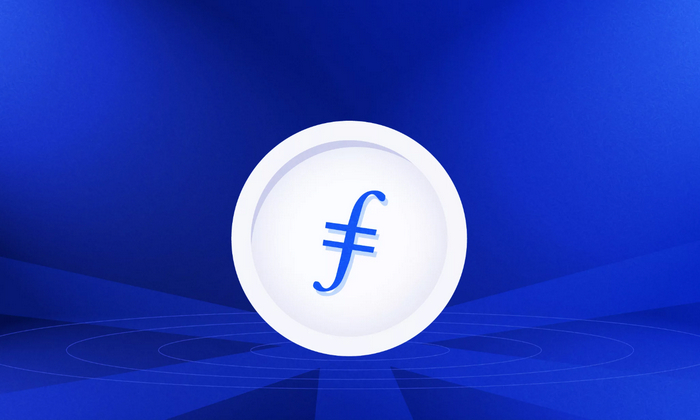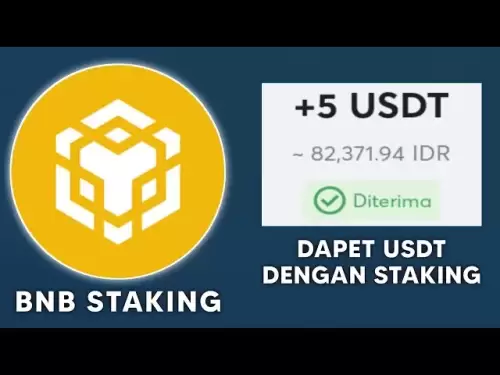-
 Bitcoin
Bitcoin $105,978.7605
5.45% -
 Ethereum
Ethereum $2,423.8735
9.54% -
 Tether USDt
Tether USDt $1.0005
0.02% -
 XRP
XRP $2.1626
9.40% -
 BNB
BNB $641.9746
4.79% -
 Solana
Solana $146.4071
11.93% -
 USDC
USDC $0.9999
0.00% -
 TRON
TRON $0.2735
4.33% -
 Dogecoin
Dogecoin $0.1646
10.74% -
 Cardano
Cardano $0.5839
9.61% -
 Hyperliquid
Hyperliquid $38.4234
8.79% -
 Sui
Sui $2.8430
18.30% -
 Bitcoin Cash
Bitcoin Cash $469.1401
3.03% -
 Chainlink
Chainlink $12.9029
12.83% -
 UNUS SED LEO
UNUS SED LEO $9.1005
0.89% -
 Avalanche
Avalanche $18.1358
11.70% -
 Stellar
Stellar $0.2453
8.78% -
 Toncoin
Toncoin $2.9174
7.94% -
 Shiba Inu
Shiba Inu $0.0...01160
11.29% -
 Litecoin
Litecoin $85.3114
7.70% -
 Hedera
Hedera $0.1512
15.21% -
 Monero
Monero $309.9386
4.88% -
 Ethena USDe
Ethena USDe $1.0007
0.03% -
 Polkadot
Polkadot $3.4098
9.78% -
 Dai
Dai $1.0002
0.02% -
 Bitget Token
Bitget Token $4.1523
4.23% -
 Uniswap
Uniswap $6.8863
11.50% -
 Pepe
Pepe $0.0...09973
13.94% -
 Pi
Pi $0.5363
7.15% -
 Aave
Aave $255.4680
15.65%
Is FIL coin worth holding for a long time? What is the prospect of FIL coin?
FIL coin's long-term prospects are promising due to the increasing demand for decentralized storage, the growth of the Filecoin network, and the expected adoption by enterprise clients.
Oct 13, 2024 at 05:41 pm

Is FIL Coin Worth Holding for the Long Term? Exploring the Prospects of FIL Coin
1. Understanding FIL Coin
Filecoin (FIL) is a decentralized storage network built on the blockchain that aims to provide a secure, reliable, and affordable alternative to centralized storage providers like Amazon Web Services (AWS) and Google Cloud. FIL coin serves as the native cryptocurrency used to pay for storage and retrieval services on the network.
2. Long-Term Potential Factors
a. Demand for Decentralized Storage:
The growing need for data privacy, security, and censorship resistance is driving the demand for decentralized storage solutions. FIL coin benefits from this trend as a reliable and scalable option.
b. Growth of the Filecoin Network:
The Filecoin network has been steadily growing in terms of storage capacity and user base. This expansion strengthens the ecosystem and increases the value of FIL coin.
c. Adoption by Enterprise Clients:
Large enterprises are increasingly exploring decentralized storage solutions due to cost savings, security enhancements, and compliance advantages. FIL coin is well-positioned to benefit from this adoption.
3. Historical Performance and Future Prospects
a. Historical Price Performance:
FIL coin has experienced significant price fluctuations since its launch in 2020. However, it has shown resilience and has consistently ranked among the top cryptocurrencies by market capitalization.
b. Long-Term Price Predictions:
Industry analysts forecast a bullish outlook for FIL coin in the long term. The coin is expected to continue its growth trajectory as the demand for decentralized storage increases and the Filecoin network expands.
c. Factors Influencing Future Prospects:
- Competition from other decentralized storage providers
- Regulatory changes
- Developments in the blockchain and storage technology landscape
4. Risks and Considerations
Before investing in FIL coin, it's important to consider the following risks:
- Volatility of the cryptocurrency market
- Dependence on the success of the Filecoin network
- Cybersecurity threats to decentralized storage systems
5. Conclusion
FIL coin holds significant potential for long-term growth. Its value is tied to the growing demand for decentralized storage, the expansion of the Filecoin network, and the adoption by enterprise clients. While there are risks associated with any cryptocurrency investment, FIL coin offers a unique opportunity to participate in the emerging decentralized storage ecosystem.
Disclaimer:info@kdj.com
The information provided is not trading advice. kdj.com does not assume any responsibility for any investments made based on the information provided in this article. Cryptocurrencies are highly volatile and it is highly recommended that you invest with caution after thorough research!
If you believe that the content used on this website infringes your copyright, please contact us immediately (info@kdj.com) and we will delete it promptly.
- Circle's Stablecoin Soars: A $62 Billion Power Play
- 2025-06-24 06:25:12
- COIN Act: Curbing Crypto Profiteering by Public Officials – A Necessary Step?
- 2025-06-24 06:25:12
- Bitcoin Scaling Showdown: Lightning Network, Sztorc, and the Future of Payments
- 2025-06-24 04:25:12
- Cathie Wood, ARK Invest, and Circle Shares: A Wild Ride on the Stablecoin Wave
- 2025-06-24 04:25:12
- Ruvi AI: Blockchain Tech Meets Real-World Utility – The Next Big Thing?
- 2025-06-24 05:25:13
- US, Iran, Middle East: Navigating the Geopolitical Minefield
- 2025-06-24 05:05:12
Related knowledge

How to customize USDT TRC20 mining fees? Flexible adjustment tutorial
Jun 13,2025 at 01:42am
Understanding USDT TRC20 Mining FeesMining fees on the TRON (TRC20) network are essential for processing transactions. Unlike Bitcoin or Ethereum, where miners directly validate transactions, TRON uses a delegated proof-of-stake (DPoS) mechanism. However, users still need to pay bandwidth and energy fees, which are collectively referred to as 'mining fe...

USDT TRC20 transaction is stuck? Solution summary
Jun 14,2025 at 11:15pm
Understanding USDT TRC20 TransactionsWhen users mention that a USDT TRC20 transaction is stuck, they typically refer to a situation where the transfer of Tether (USDT) on the TRON blockchain has not been confirmed for an extended period. This issue may arise due to various reasons such as network congestion, insufficient transaction fees, or wallet-rela...

How to cancel USDT TRC20 unconfirmed transactions? Operation guide
Jun 13,2025 at 11:01pm
Understanding USDT TRC20 Unconfirmed TransactionsWhen dealing with USDT TRC20 transactions, it’s crucial to understand what an unconfirmed transaction means. An unconfirmed transaction is one that has been broadcasted to the blockchain network but hasn’t yet been included in a block. This typically occurs due to low transaction fees or network congestio...

How to check USDT TRC20 balance? Introduction to multiple query methods
Jun 21,2025 at 02:42am
Understanding USDT TRC20 and Its ImportanceUSDT (Tether) is one of the most widely used stablecoins in the cryptocurrency market. It exists on multiple blockchain networks, including TRC20, which operates on the Tron (TRX) network. Checking your USDT TRC20 balance accurately is crucial for users who hold or transact with this asset. Whether you're sendi...

What to do if USDT TRC20 transfers are congested? Speed up trading skills
Jun 13,2025 at 09:56am
Understanding USDT TRC20 Transfer CongestionWhen transferring USDT TRC20, users may occasionally experience delays or congestion. This typically occurs due to network overload on the TRON blockchain, which hosts the TRC20 version of Tether. Unlike the ERC20 variant (which runs on Ethereum), TRC20 transactions are generally faster and cheaper, but during...

The relationship between USDT TRC20 and TRON chain: technical background analysis
Jun 12,2025 at 01:28pm
What is USDT TRC20?USDT TRC20 refers to the Tether (USDT) token issued on the TRON blockchain using the TRC-20 standard. Unlike the more commonly known ERC-20 version of USDT (which runs on Ethereum), the TRC-20 variant leverages the TRON network's infrastructure for faster and cheaper transactions. The emergence of this version came as part of Tether’s...

How to customize USDT TRC20 mining fees? Flexible adjustment tutorial
Jun 13,2025 at 01:42am
Understanding USDT TRC20 Mining FeesMining fees on the TRON (TRC20) network are essential for processing transactions. Unlike Bitcoin or Ethereum, where miners directly validate transactions, TRON uses a delegated proof-of-stake (DPoS) mechanism. However, users still need to pay bandwidth and energy fees, which are collectively referred to as 'mining fe...

USDT TRC20 transaction is stuck? Solution summary
Jun 14,2025 at 11:15pm
Understanding USDT TRC20 TransactionsWhen users mention that a USDT TRC20 transaction is stuck, they typically refer to a situation where the transfer of Tether (USDT) on the TRON blockchain has not been confirmed for an extended period. This issue may arise due to various reasons such as network congestion, insufficient transaction fees, or wallet-rela...

How to cancel USDT TRC20 unconfirmed transactions? Operation guide
Jun 13,2025 at 11:01pm
Understanding USDT TRC20 Unconfirmed TransactionsWhen dealing with USDT TRC20 transactions, it’s crucial to understand what an unconfirmed transaction means. An unconfirmed transaction is one that has been broadcasted to the blockchain network but hasn’t yet been included in a block. This typically occurs due to low transaction fees or network congestio...

How to check USDT TRC20 balance? Introduction to multiple query methods
Jun 21,2025 at 02:42am
Understanding USDT TRC20 and Its ImportanceUSDT (Tether) is one of the most widely used stablecoins in the cryptocurrency market. It exists on multiple blockchain networks, including TRC20, which operates on the Tron (TRX) network. Checking your USDT TRC20 balance accurately is crucial for users who hold or transact with this asset. Whether you're sendi...

What to do if USDT TRC20 transfers are congested? Speed up trading skills
Jun 13,2025 at 09:56am
Understanding USDT TRC20 Transfer CongestionWhen transferring USDT TRC20, users may occasionally experience delays or congestion. This typically occurs due to network overload on the TRON blockchain, which hosts the TRC20 version of Tether. Unlike the ERC20 variant (which runs on Ethereum), TRC20 transactions are generally faster and cheaper, but during...

The relationship between USDT TRC20 and TRON chain: technical background analysis
Jun 12,2025 at 01:28pm
What is USDT TRC20?USDT TRC20 refers to the Tether (USDT) token issued on the TRON blockchain using the TRC-20 standard. Unlike the more commonly known ERC-20 version of USDT (which runs on Ethereum), the TRC-20 variant leverages the TRON network's infrastructure for faster and cheaper transactions. The emergence of this version came as part of Tether’s...
See all articles
























































































